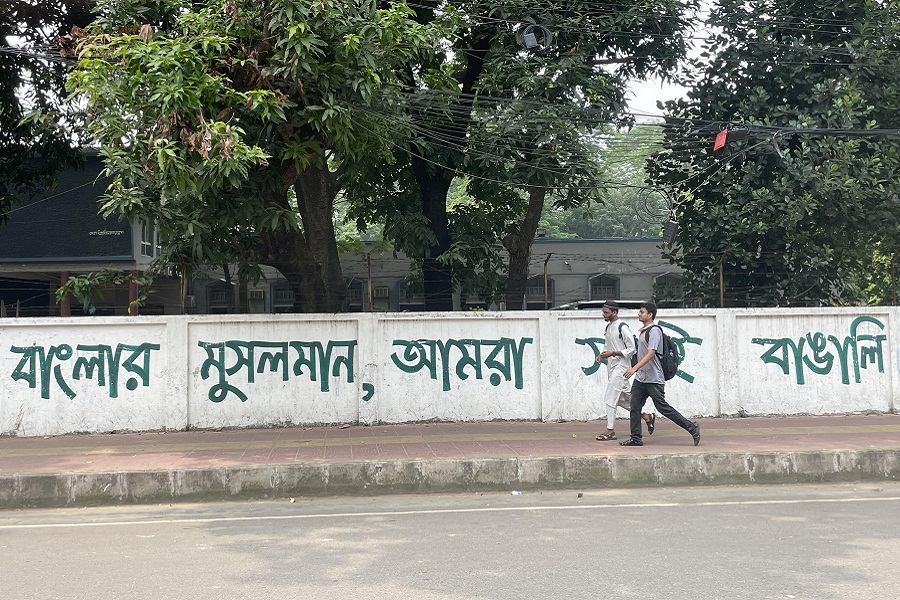Tales of wall: How Chikamara and Graffities have changed over time

Published :
Updated :

Graffiti has made a unique name in Bangladesh and within its cultural landscape, where it is often seen as an act of artistic expression and urban resentment. Graffiti, which has its roots in the country's historical and sociopolitical setting, has evolved from traditional forms to contemporary street art, changing urban landscapes and establishing the distinctive cultural identity of places like Dhaka.
Bangladesh has a rich graffiti history intimately associated with the nation's political upheavals and cultural shifts. 'Chika Mara,' or writing or sketching on walls, is one of Bangladesh's oldest public art types.
During the Liberation War of 1971, this technique became a potent political speech and resistance tool. Slogans and pictures evoked strong feelings in the populace and called for solidarity against Pakistan's repressive rule.
Chika Mara was first used as an outlet for public announcements, social commentary, and political messaging. It offered the general public a voice, allowing them to voice their thoughts and participate in the national discourse.
Chika Mara has changed over time, absorbing more creative components and becoming a dynamic cultural phenomenon. It now represents social, religious, and artistic themes exploring words of wisdom, quotations from the holy books, and the objectives of the development sector. Some are also found in advertisements.
The busy roads and secret passageways have become blank canvases for graffiti artists hoping to enhance the urban landscape. Graffiti in Dhaka sometimes consists of magnificent murals and detailed patterns representing a broad range of subjects, from abstract art to cultural heritage and societal challenges.
Renowned locations like Shahbagh, the campus of Dhaka University, and other public sites have developed into hotspots for graffiti art, with each artwork adding to the city's distinctive character.
During election seasons, walls are covered with candidate photos and campaign slogans. Graffiti provides a forum for protest during social turmoil when demands for justice and structural reform are made.
For example, graffiti commemorating the Language Movement of 1952 or the Liberation War of 1971 arouses strong pride and nostalgia.
The way that different generations view and value graffiti varies greatly. The older generation, who saw Chika Mara come to prominence during the freedom movement, frequently sees graffiti as a strong representation of resiliency and resistance.
They remember an era when walls were the primary means of organising the public and spreading important messages. On the other hand, the younger generation views graffiti as a way to express themselves artistically and to make their environment look nicer.
They view graffiti as a symbol of modernism, originality, and inventiveness that combines classic and contemporary components. This perceived gap between generations emphasises how graffiti is a dynamic art form that can change with time without losing its essential qualities.
Rashik Razzaque, studying in the Department of International Relations at the University of Dhaka, shares insights on graffiti, portraying it as a street art form strategically placed to captivate public attention.
He highlights artists' expressions of societal critiques and calls for reform, often challenging conservative and authoritarian views.
Though some may consider this 'vandalism', these impactful messages are predominantly crafted anonymously due to potential legal ramifications, underscoring the clandestine nature of this form of expression.
Be it for social change or preaching peace and harmony, the various messages circulated on the city walls have little to do with the actual changes. However, they provide the streets with a beautiful look, where a wannabe photographer might find his subject, get influenced by the words, and participate in fundamental changes.
mdimran-2020512459@ir.du.ac.bd


 For all latest news, follow The Financial Express Google News channel.
For all latest news, follow The Financial Express Google News channel.